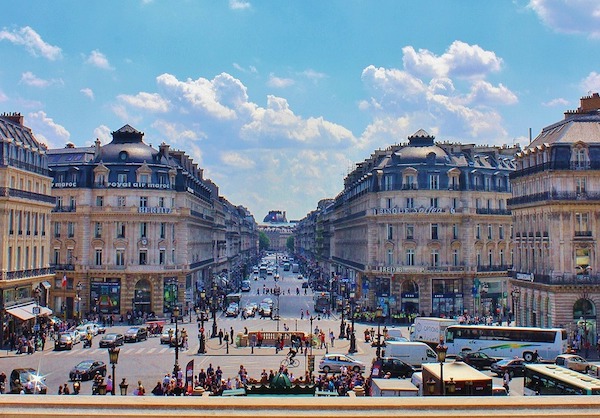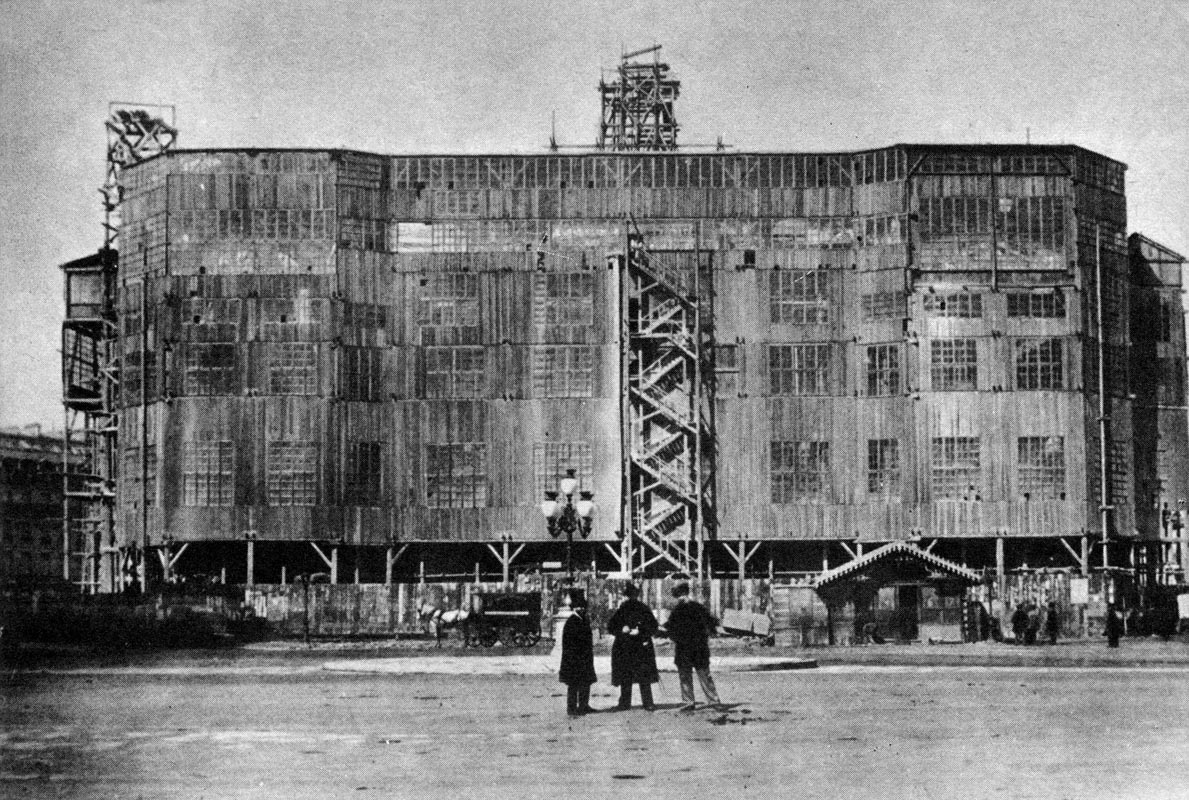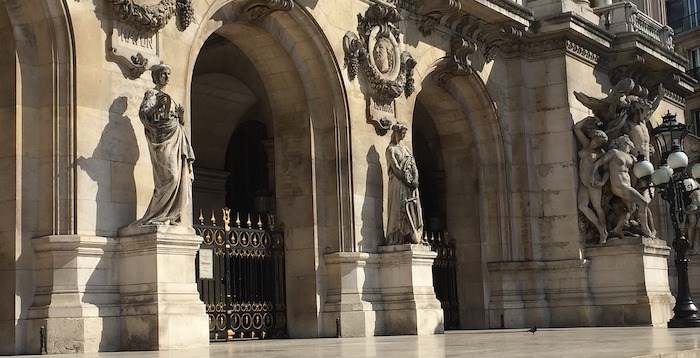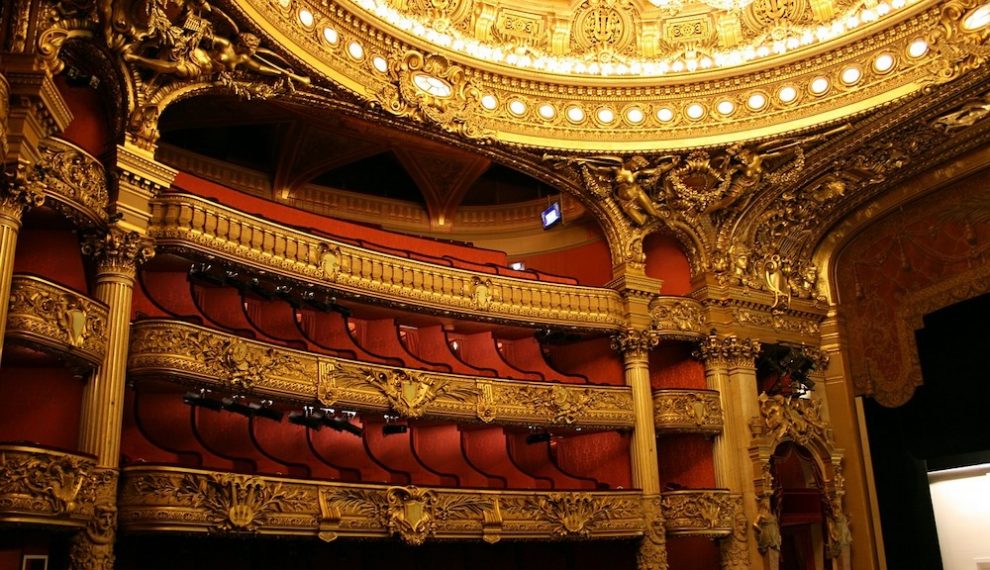Symbole du Second Empire et des transformations qui ont profondément marqué Paris pendant cette période, celui qui fut appelé “l’Opéra de Paris” jusqu’à la naissance de son petit frère à Bastille en 1989 est aujourd’hui un monument incontournable de la capitale. Un patrimoine riche d’histoires et d’anecdotes, qui contribuent à la renommée de ce haut lieu culturel parisien.
L’attentat contre Napoléon III
Un fait tragique est à l’origine de la naissance de l’opéra. Le 14 janvier 1858, Napoléon III se rend à l’opéra, alors situé rue Le Peletier, dans l’actuel 9e arrondissement. Lorsque son carrosse se gare, plusieurs bombent explosent, atteignant chevaux et cavaliers. Si le couple impérial s’en sortira indemne, malgré quelques égratignures, il y aura huit morts et plusieurs blessés lors de cette attentat perpétré par un révolutionnaire italien, Felice Orsini, et plusieurs complices.
Le lendemain, l’Empereur décide la construction d’un nouvel opéra, d’où il pourrait se rendre facilement, et à moindre risque, depuis sa résidence des Tuileries.
Charles Garnier, l’inconnu
En 1860 est lancé un concours international – anonyme – pour l’édification de l’Académie impériale de musique et de danse. 171 candidats répondent à l’appel, dont l’architecte de la Ville de Paris, Rohault de Fleury, ainsi que Viollet-le-Duc. C’est finalement un jeune homme inconnu de 35 ans, Charles Garnier, qui remporte le concours. Il y consacrera toute son ardeur d’artiste romantique emprunt d’académisme.
L’avenue de l’Opéra
Pour pouvoir se rendre à l’Opéra depuis sa résidence des Tuileries, Napoléon III demande au préfet Haussmann de créer l’avenue de l’Opéra, laquelle ne s’inscrivait pas à l’origine dans les nouveaux plans d’urbanisme.

Charles Garnier, ravi qu’une si belle perspective mette en valeur son monument, ne demande qu’une chose : qu’aucun arbre ne soit planté sur les bordures de l’avenue, pour que rien ne puisse troubler la vue des passants ! C’est la raison pour laquelle, aujourd’hui encore, vous ne trouvez aucun arbre sur cette avenue.
Le lac sous l’opéra
Si des restrictions financières ralentissent l’aboutissement du projet, ce sont également des contraintes techniques et inattendues qui mettent à mal l’architecte. En effet, pendant les fouilles préalables à la construction est découvert un sol particulièrement impropre et marécageux.
Pour résister à la pression des eaux d’infiltration et mieux repartir les charges du bâtiment, un cuvelage en béton rempli d’eau est réalisé par Charles Garnier. Un “lac” qui alimentera l’imaginaire collectif, notamment celui du célèbre fantôme de l’Opéra, et qui sert aujourd’hui de réservoir pour les pompiers de Paris.
Une oeuvre-d’art bien gardée
La première pierre de l’opéra fut posée en 1862, mais les travaux durèrent plus de 15 ans, à cause de restrictions budgétaires, de la guerre franco-prussienne et de la Commune de Paris.

Pendant la durée des travaux, des échafaudages masquaient la façade de l’opéra pour ne pas trahir le travail des artistes. Un édifice considéré par Garnier comme une véritable oeuvre-d’art, qui souhaitait ainsi susciter la curiosité des parisiens en ne dévoilant la façade que par étapes.
Le scandale de La Danse de Carpeaux
En 1869, les groupes sculptés de la façade de l’opéra sont découverts. L’un d’entre eux, réalisé par Jean-Basptiste Carpeaux, et représentant des femmes tournoyant avec ivresse et gaieté autour du génie de la Danse, fait scandale. Dans la nuit du 26 au 27 août 1869, une bouteille d’encre fut jetée contre ce groupe sculpté.

C’est une copie qui est aujourd’hui visible sur la façade de l’opéra, l’oeuvre d’origine étant exposée depuis 1986 au musée d’Orsay.
Charles Garnier humilié
Le 5 janvier 1875, l’Opéra est inauguré. Napoléon III, exilé en Angleterre et mort en 1873, ne vit jamais l’achèvement de son oeuvre. Le gouvernement présidé par le très conservateur Mac Mahon souhaite effacer toute trace du Second Empire. C’est ainsi que, pour l’inauguration, Charles Garnier ne fut même pas invité, et dût payer lui-même sa place pour participer au spectacle !
L’accident mortel
Le 20 mai 1896, 2000 personnes assistent à une représentation de « Faust » lorsque l’un des contrepoids qui soutenaient l’énorme lustre se détacha et perça le plafond avant d’écraser une spectatrice qui occupait la quatrième galerie… Un épisode qui inspira – encore – Gaston Leroux dans l’un des plus célèbres épisodes du Fantôme de l’Opéra.


